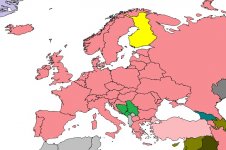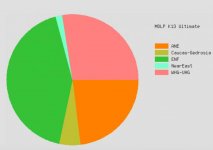LeBrok
Elite member
- Messages
- 10,261
- Reaction score
- 1,617
- Points
- 0
- Location
- Calgary
- Ethnic group
- Citizen of the world
- Y-DNA haplogroup
- R1b Z2109
- mtDNA haplogroup
- H1c
To be exact EEF is European hybrid, and it was found in Stuttgart. However it has over 80% component which came with first farmers. It is called Early Neolithic Farmer admixture. From archaeology we know that first farmers happened in Near East, and then farming spread to Europe through Balkans. We are yet to physically find and sequence this supposed ENF genome. Though it is pretty sure thing that we will find it there.On EEF the paper states: Early European Farmer (EEF): apparently this is a hybrid component, the result of mixture between "Basal Eurasians" and a WHG-like population possibly from the Balkans. (possibly from Balkans) how do you know it came from near east (does it say on a paper?).
If E-V13 came with farmers to Balkans, it most likely started in Near East and walked from there to Europe with other farmers of G2a type, as minority clade. If it came to Europe in Mesolithic, then it came as hunter-gatherer. It could have originated in Saharan Africa, then came to Iberia, bringing North African admixture, which was found in some WHGs. When farmers came and acquired V13 from hunter gatherers it could spread around in bigger numbers throughout Europe with farmers.This correlates with Maciamo arguing about E-V13 (10,000 ybp), as its peak or roots is south east balkans. And before that its a subclade of M-78 (south east Africa). And M-78 might have crossed (before 10,000 ybp) straight to south east balkans (or even Iberia) and not through Levant and Anatolia.
Looking at E-V13 map, it looks wide spread in every part of Europe, therefore very ancient. It started expansion in Mid Neolithic to my guess, and in direction from South to North.







